The colorful life and tragic death of Sergei Lazo
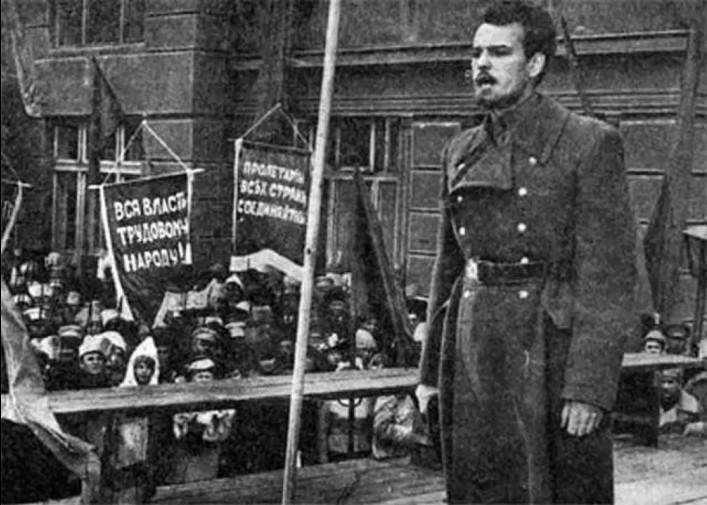
Still from the film “Sergei Lazo”, 1967
Sergei Lazo is another “inconvenient” (and therefore practically forgotten) hero of the civil war for the current bourgeois authorities. But once upon a time all Soviet schoolchildren knew his name. And Vladimir Mayakovsky in 1924 mentioned Sergei Lazo (and not Shchors, Chapaev or Kochubey) in his “textbook” poem “Vladimir Ilyich Lenin”, which was included in Soviet literature textbooks:
The mouth was filled with lead and tin.
We will talk about it in our article today.
Origin and early years
By birth, the future Red commander Sergei Georgievich Lazo was a nobleman. He was born in the Bessarabian village of Piatra on March 7, 1894, and here he spent his childhood.
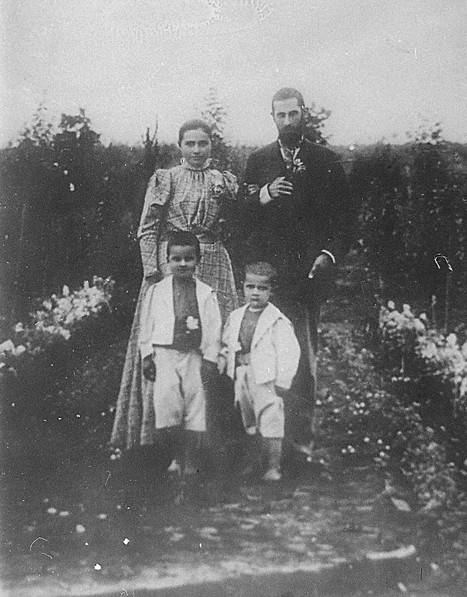
Georgy and Elena Lazo with their sons (Sergey on the left)
The father of the family died in 1905; in 1907, the widow and three sons moved to her estate in the village. Yesorens.
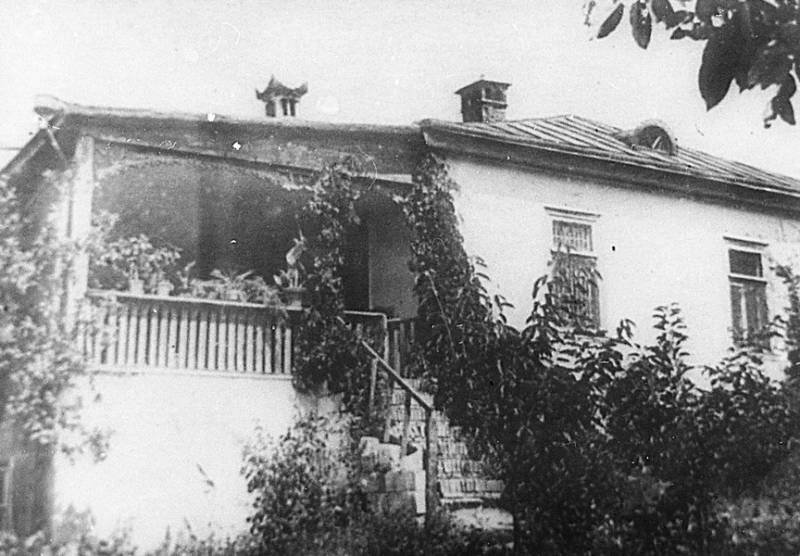
House of the Lazo family in the village. Ezereny
In 1910, the family settled in Chisinau. The eldest son, Sergei (the hero of our article), having graduated from high school with honors, entered the St. Petersburg Technological Institute in 1912. By this time, by the way, he already knew 5 languages - Russian, Romanian, English, German and French.
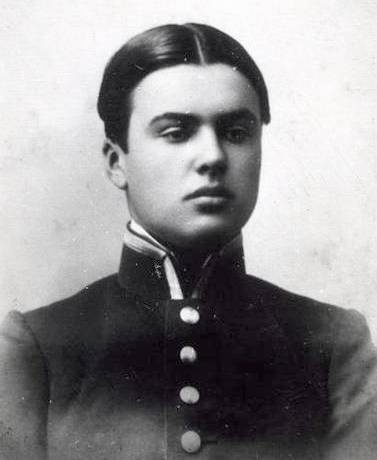
S. Lazo, photograph 1912
However, in 1914, he had to return home, as his mother became seriously ill, and Sergei, as the eldest son, had to take care of the family. I managed to return to study a few months later - already at the Faculty of Physics and Mathematics of Moscow University. Here he became a member of one of the underground circles. But Sergei Lazo did not manage to graduate from this educational institution either, since in 1916 he was drafted into the army. The former student was sent to study at the Alekseevsky Infantry School, from where he was released as an ensign, but soon received the rank of second lieutenant. Lazo began his military service in the 15th Siberian Reserve Rifle Regiment, which was located in Krasnoyarsk. Many political exiles traditionally lived in this city, with whom S. Lazo quickly found a common language and even joined the Socialist Revolutionary Party. In his political views, he was then close to the left-wing Socialist Revolutionaries-internationalists.
The beginning of a revolutionary career
The young second lieutenant Sergei Lazo enjoyed enormous authority among the soldiers of his regiment and, after receiving news of the February Revolution, was chosen as commander of the 4th company. Already on March 4, it was Lazo who arrested Governor Yakov Gololobov and some other tsarist officials, and then was sent to Petrograd - to the first All-Russian Congress of Soviets of Workers' and Soldiers' Deputies. Here he saw Lenin, whose speech made a great impression on him.
Returning to Krasnoyarsk, Lazo actively participated in the establishment of Soviet power in this city. The Commissioner of the Provisional Government reported to Petrograd about what happened in Krasnoyarsk on the night of October 29:
However, Lazo formally joined the RCP(b) only in the summer of 1919. Although he openly sympathized with the ideas of the Bolsheviks from the time he heard Lenin’s speech. Then Lazo participated in the II Congress of Soviets of Eastern Siberia in Irkutsk and the I All-Siberian Congress of Soviets, and was elected a member of the Central Executive Committee of the Soviets of Siberia. He suppressed an attempt at a counter-revolutionary speech by the cadets in Omsk, and then, in December 1917, an uprising in Irkutsk, which was prepared by his fellow party members - the Socialist Revolutionaries. It was then that he first took part in real combat. The Military Revolutionary Committee became aware of the impending rebellion, in which cadets of the local military school and cadets of three ensign schools were to take part. They were ordered to surrender weapon, however, some of the cadets of the 1st and 2nd schools did not obey. Instead, on December 21, they laid siege to the former house of the Governor General, which was occupied by many Soviet institutions. But local Red Army soldiers controlled the only bridge, which made it possible to localize the rebellion and hold the city until December 23, when Sergei Lazo’s detachment arrived from Krasnoyarsk. Street fighting lasted until January 1 and ended in victory for the Reds. Lazo became the military commandant of Irkutsk, as well as the head of its garrison. Then he suppressed the anti-Soviet rebellion in Solikamsk.
Red Commander
Lazo’s career developed simply fantastically, and in February 1918 we see him as the commander of the Transbaikal Front, deployed in Dauria (Eastern Transbaikalia) against the Cossacks of Yesaul G.M. Semenov. Semenov, who awarded himself the title of ataman, wrote about it this way:
Let us remember that Lazo turned 24 only in March of that year. Such a rapid rise would have been the envy of many Napoleonic marshals, who themselves often went from privates or non-commissioned officers to generals in just a few years. By the way, they claim that G. Semenov recognized the military talent of his opponent and said:
Lazo then had two female commissioners subordinate to him. One of them, 20-year-old Olga Grabenko, became his wife.
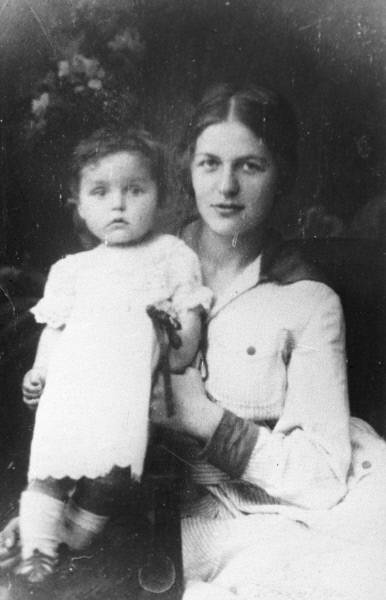
Olga Grabenko-Lazo with her daughter Ada, born in 1919.
But the second “commissar” especially stood out - Nina Lebedeva-Kiyashko, the adopted daughter of the tsarist governor of Transbaikalia, who as a high school student joined the Socialist Revolutionary Party, from them went over to the anarchists, and took part in terrorist acts. Being small in stature, she kept even her “fellow travelers” - seasoned convicts - at bay, addressing them with a Mauser at the ready and with masterly obscene phrases, from which even true experts in “prison folklore” were delighted.
By the way, now you can often read that Sergei Lazo was almost a bandit, robbing peasants. Of course, both the Reds and the Whites could only receive food from local peasants. This fact was not particularly hidden, although it was not advertised. Remember the episode of the famous film “Chapaev”, released in 1934 (!):
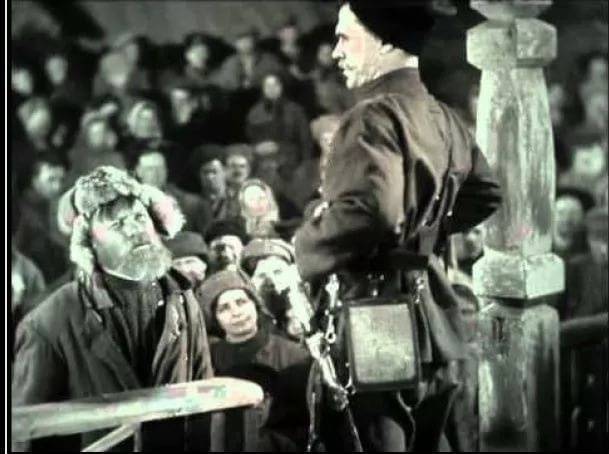
Still from the film “Chapaev”: “Well, it’s just like a carousel. The whites came to rob, the reds came to rob, too. Well, where should a peasant go?”
However, Lazo himself did not like this practice very much. Here's what history in the late 1970s, journalists heard from an old man who saw this red commander:
But let's return to the situation in Siberia and Transbaikalia in 1918.
The “special” detachment created by Semenov in Northern Manchuria (which, in addition to the Cossacks, included Mongols and Buryats) was supposed to cut off the Far East from other territories of Soviet Russia. His allies were I. Kalmykov (also a self-proclaimed ataman, in fact a centurion), who was called “bloody dictator of Khabarovsk"and General D. Horvath (former Russian manager of the Chinese Eastern Railway in Manchuria).
In Vladivostok on April 4-5, 1918, occupation units of the former allies from the Entente landed: first, under the pretext of protecting their subjects, the Japanese, then the British (and in August, also the Americans). In October 1918, the number of the Japanese contingent reached 72 thousand people, the Americans increased the number of their troops to 10 thousand, about 28 thousand more were “sent” to other countries - Great Britain, France, Italy, Greece, Romania, Serbia, plus Czechoslovak legionnaires. Foreign occupation of Vladivostok continued until 1925.
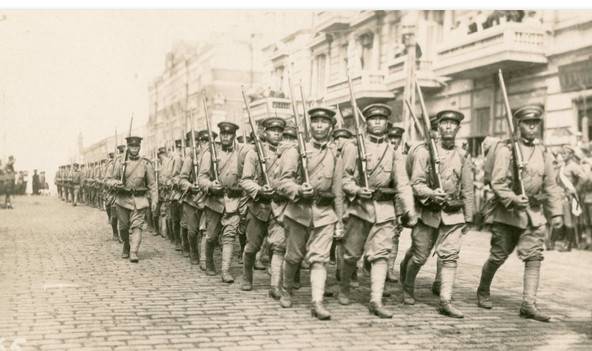
Japanese soldiers in Vladivostok
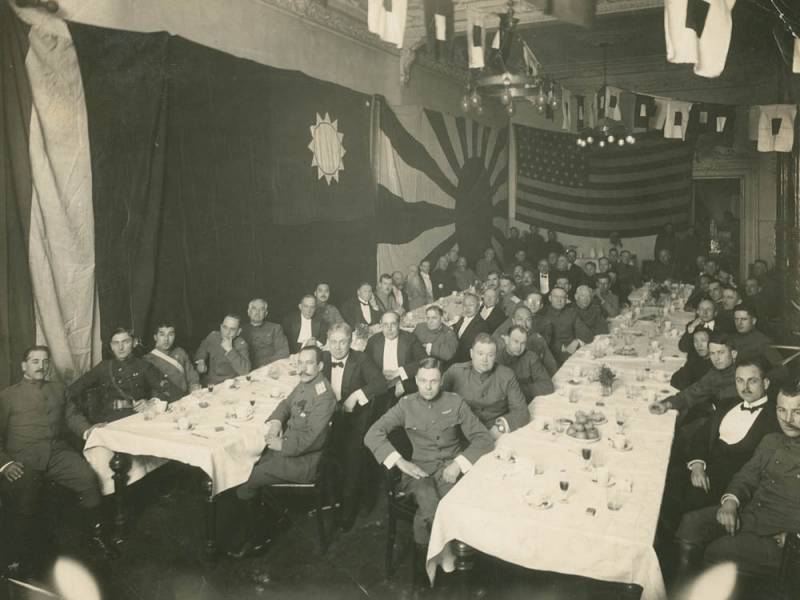
Banquet invaders, Vladivostok - on the wall flags of France, USA, Japan, China
It was the Japanese who showed the greatest activity, occupying the Primorsky, Amur, Transbaikal regions and Northern Sakhalin. They also caused the greatest damage to the economy of the occupied regions. 52% of the herring catch in 1919 and 75% in 1921 were sent to Japan, and they exported the entire salmon catch. More than 2 thousand carriages and about 500 sea and river vessels were captured and sent to Japan. Other “trophies” included 43 tons of gold, more than 650 thousand cubic meters of timber, a large amount of steel, cast iron, copper, sulfur, nitrate, phosphorus, wax, thousands of horses and cattle. Even rails and sleepers were removed.
At the same time, Semenov’s detachments, driven back to Manchuria by Lazo, launched a second attack on Chita. Its units included Japanese staff officers, several hundred soldiers with 15 heavy guns and artillery crews. In May, as you remember, a rebellion of Czech legionnaires began, and trains with them stretched throughout Siberia.
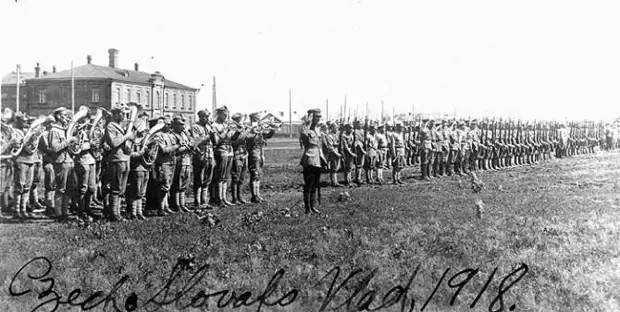
Czech legionnaires in Vladivostok
In general, the situation could not have been worse.
On August 28, 1918, at a conference of party and Soviet workers of Siberia, which took place at the Urulga station, it was decided to switch to guerrilla warfare tactics. At the railway station, Erofey Pavlovich, an armored detachment was formed, which was supposed to cover the retreat of the remnants of the troops of the disbanded Trans-Baikal Front. Lazo with a small detachment from the Maly Never junction moved towards Yakutsk, but in time he learned about the White Guard coup in this city. As a result, in mid-December 1918 he ended up in Vladivostok, where in January 1919 he was elected a member of the underground Far Eastern Regional Committee of the RCP (b), although he would officially join this party only in the summer.
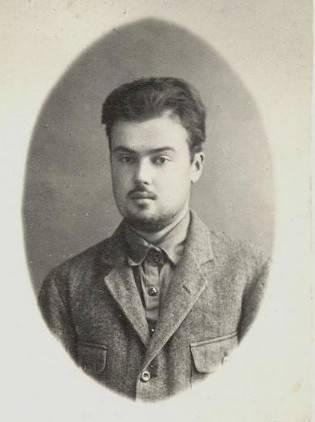
S. Lazo – member of the underground Far Eastern Regional Committee of the RCP
Meanwhile, in April 1919, the Red Army units of the Eastern Front of M. V. Frunze went on the offensive. In the same month, at the Vladivostok underground conference, Lazo was appointed commander of partisan formations in Primorye. Very quickly, a 9-strong army was formed, the headquarters of which Lazo set up at Adrianovka station. In addition to the detachments that arrived from Vladivostok, Khabarovsk and Blagoveshchensk, it included international units from former prisoners of war: Hungarians (Magyars), Austrians and Germans. In addition, 20 partisan detachments operated in Primorye. At this time, the future famous writer A. Fadeev met with Lazo, who recalled:
He also wrote:
Lazo developed a rather bold plan to destroy enemy forces along the important Suchansky railway line, which was crowned with complete success. Then the detachments of Ataman Semenov, who were pressed to the border, were attacked, but the White Czechs prevented them from finishing them off, who captured Irkutsk on July 12, Verkhneudinsk on August 20, and Chita on the 26th.
In November 1919, Lazo was recalled to Vladivostok, where he was assigned to head the Military Revolutionary Headquarters in preparation for the uprising in that city. And on January 26, 1920, a joint operational headquarters was formed, which directly led the uprising - it was also headed by Lazo. Partisan detachments were brought to the city and occupied Nikolsk-Ussuriysky, Suchan and Shkotovo, and the garrison of Okeanskaya station went over to the Bolshevik side. The uprising began at 3 o'clock in the morning on January 31, 1920 - and by the middle of this day the troops of Kolchak's governor, Lieutenant General Rozanov, laid down their arms. By this time, the former admiral had already been surrendered by the allies to the Socialist Revolutionaries and Mensheviks of the Political Center of Irkutsk.
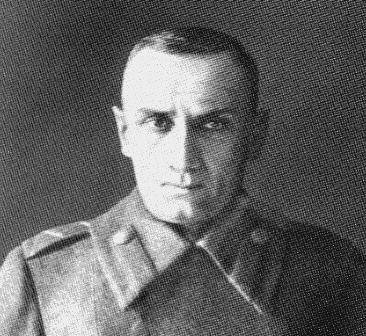
The last photograph of Kolchak, late 1919.
Shoulder strap french
Japanese tobacco,
Omsk ruler.
General Rozanov, who was left out of work, urgently sailed to Japan.
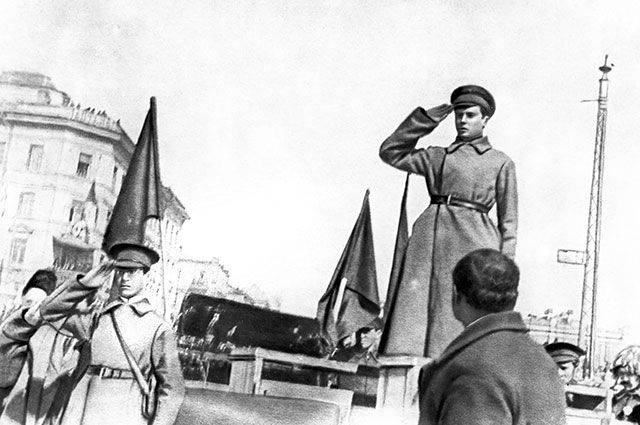
Sergei Lazo, photograph 1920
Since the Entente occupation troops were in the city, the “pink” Primorsky regional zemstvo government was formed, but the Bolsheviks ended up in key positions. Lazo received the post of Deputy Chairman of the Military Council. The Far Eastern Committee of the RCP(b) explained:
Lazo, by the way, was an ardent supporter of the establishment of Soviet power in Primorye, but he was convinced of the inexpediency of such a decision. But he was let down and ultimately killed by his own subordinates - anarchists Yakov Tryapitsyn (he was only 23 years old) and the above-mentioned “commissar” Nina Lebedeva.
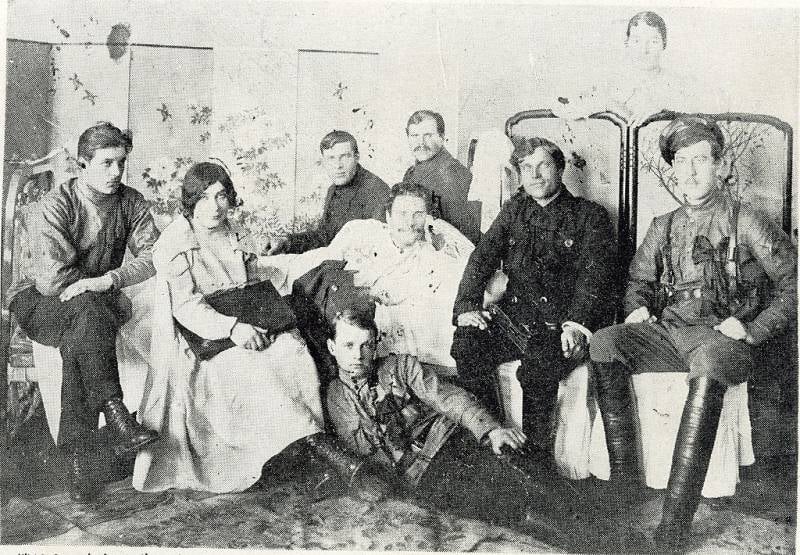
Yakov Tryapitsyn lies on the bed, next to him is Nina Lebedeva
Nicholas Incident
In February 1920, Tryapitsyn and Lebedeva with a detachment of anarchists captured Nikolaevsk-on-Amur (a city with a population of about 20 thousand people) and proclaimed the Far Eastern Soviet Republic.
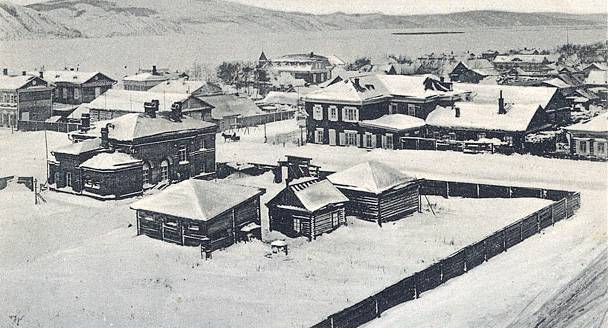
Nikolaevsk-on-Amur at the beginning of the twentieth century.
“Requisitions of the property of the bourgeoisie” began immediately, executions of the dissatisfied, but, most importantly, they killed the soldiers of the Japanese garrison of this city. It was impossible to give a better gift to the Japanese occupiers. Japanese troops were sent to Nikolaevsk; upon learning of their approach, the anarchists burned the city and retreated. A telegram sent by Tryapitsyn to the headquarters of the Military Council has been preserved:
The Bolsheviks did not appreciate his pathos and shot him in the village of Kerby (now named after Polina Osipenko, Khabarovsk Territory) - for the destruction of Nikolaevsk and discrediting the Soviet government.
Not content with expelling the anarchists from Nikolaevsk, which they destroyed, the Japanese attacked the Soviets and rebel military garrisons in Khabarovsk, Vladivostok, Spassk and other cities on the night of April 4-5, 1920.
On April 6, 1920, the Far Eastern Republic (FER) was proclaimed, which also included Western Transbaikalia. The Japanese hoped to make this republic their protectorate.
In Vladivostok, many Bolshevik leaders were captured by the Japanese, including the deputy chairman of the Military Council, Sergei Lazo, and two members of the Military Council, Alexey Lutsky and Vsevolod Sibirtsev. On the morning of April 9, they were taken from the city and then executed. The circumstances of their death are unknown exactly, but information soon appeared and quickly spread that on May 28 or 29, 1920, they were handed over to Bochkarev, the commander of a detachment of white Cossacks. Then, either at the Muravyevo-Amurskaya station, which later received the name Lazo, or at the Ussuri station, all three were burned in the furnace of a steam locomotive, and Lazo was burned alive. The canonical version is based on the testimony of a certain railway worker, who in September 1921 reported that he witnessed this execution at the Ussuri (Ruzhino) station: Lazo resisted and was therefore stunned with a blow to the head, and Lutsky and Sibirtsev were first shot. And the Italian journalist and intelligence officer Klempasco, who worked for the Japan Chronicle, already in April 1920 reported on the execution of these people at Cape Egersheld in Vladivostok and that their bodies were then burned in the furnace of a steam locomotive.
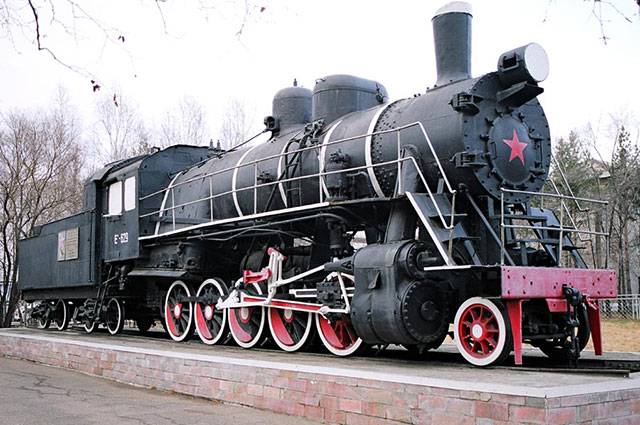
The El-629 steam locomotive, in the furnace of which Sergei Lazo was allegedly burned, was erected as a monument on Blucher Avenue in Ussuriysk in 1972. True, they claim that this is an American locomotive from the 1930s. release
Lazo's wife, Olga Andreevna Grabenko, became a candidate of historical sciences and taught at the Frunze Military Academy. She died in 1971. The only daughter of the Red Army commander, Ada, a philologist and editor of Detgiz, wrote a book about her father: “Lazo S. Diaries and Letters,” published in 1959.
The second life of Sergei Lazo
It is believed that Alexander Fadeev, who personally knew him, was the first to popularize the image of Lazo.
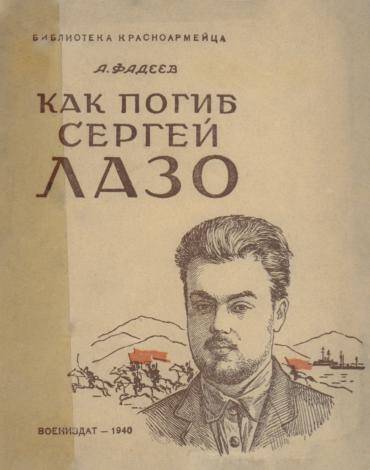
Then Mayakovsky’s poems quoted at the beginning of the article were written:
M. Gubelman, who also knew Lazo (who greatly influenced the image of Levinson in Fadeev’s novel “Destruction”), wrote a book published in the “Life of Remarkable People” series.
In Moldova in the 60s. a book about a fellow countryman was written by I. Nemirov, it was called “Life is a feat of Lazo.” Two films were shot at the Moldova-Film studio: in 1967, “Sergei Lazo,” and in 1985, the three-part “The Life and Immortality of Sergei Lazo.”
Lazo is also one of the heroes of the famous Soviet novel “Dauria” (author – K. Sedykh).
In the Primorsky and Khabarovsk Territories, districts bearing the name Lazo appeared.
The Muravyovo-Amurskaya (Ussuri Railway) station was named in honor of Lazo.
Monuments also appeared. Here, in Vladivostok, there is a sign with the inscription:
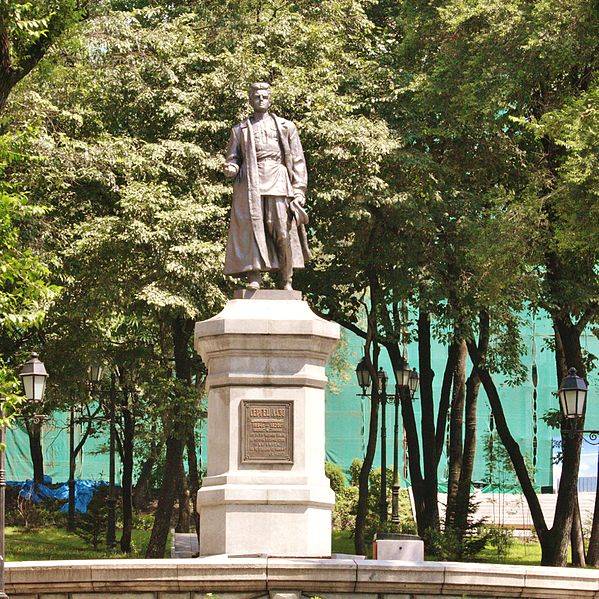
And this is the monument to Lazo in Partizansk:
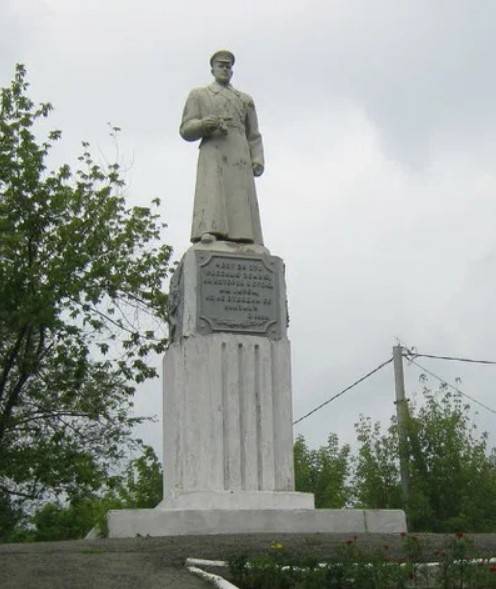
In the urban village of Pereyaslavka (Khabarovsk Territory):
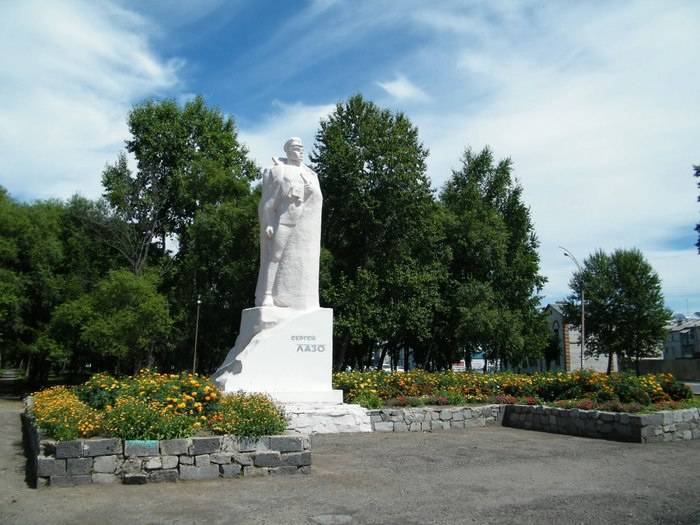
But in modern Moldova, Lazo is not held in high esteem. At first, after the annexation of this region to the USSR, the name of the hero of the civil war was given to his native village of Piatra and the city of Singerei - but were renamed again after Moldova gained independence.
This monument to Lazo in Chisinau (the tallest in the city - 7,5 meters) survived thanks to the “intercession” of the opera singer, People’s Artist of the USSR Mikhail Muntean:
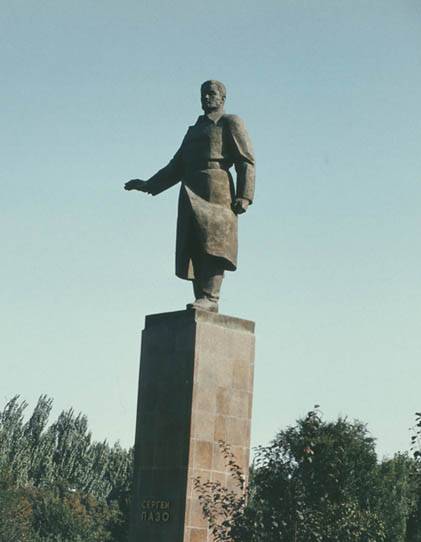
The fact is that in 1980 Muntean performed the main role in David Gershfeld’s opera “Sergei Lazo”.
In 1940, before leaving for Romania, Boris Lazo handed over the youthful diaries and personal belongings of his brother to Soviet representatives. They became exhibits of the now closed Republican Memorial Museum of Grigory Kotovsky and Sergei Lazo, which opened on May 9, 1948: more than 11 thousand exhibits could be seen in 23 halls.
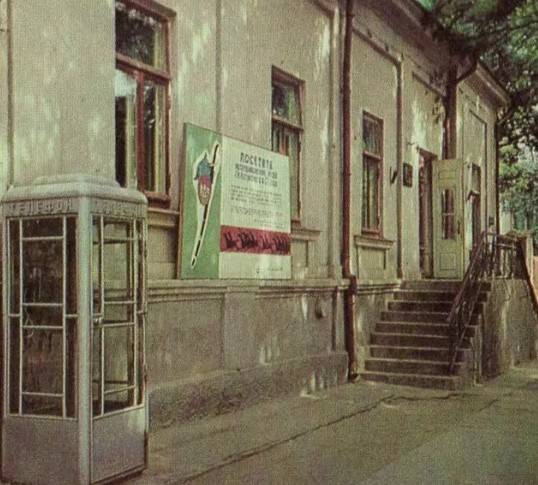
Republican Memorial Museum of G. Kotovsky and S. Lazo, Chisinau, photograph 1966.
After Moldova gained independence, the museum was closed, almost all of its rich collection disappeared without a trace. But the estate of the Lazo family in the village of Piatra was restored in 2018 - as an architectural monument of the XNUMXth century.
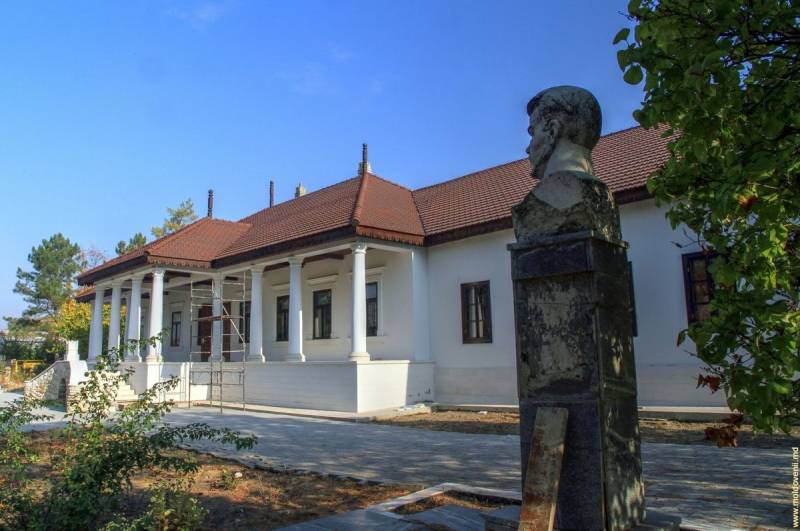
House of the Lazo family in Piatra
In this regard, the house in which G. Kotovsky was born was less fortunate: now it is a residential building and has been quite significantly rebuilt.
But you are mistaken if you think that in a “free and democratic” Russia it is impossible to violate the memory of the heroes of past years. For example, this miraculously preserved bust of S. Lazo, which stood on the territory of an abandoned military unit on Russky Island (Vladivostok), was saved by residents of the Lazovsky district of Primorsky Krai, installing it in the village of Lazo:
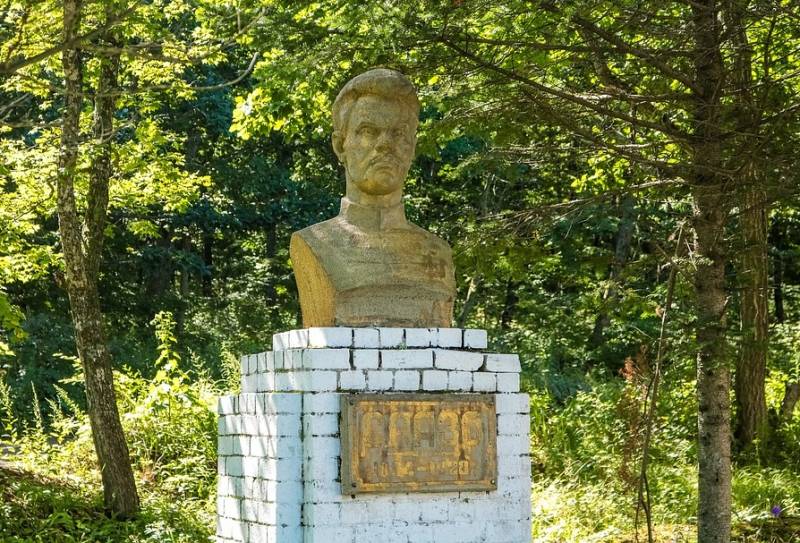
In Victor Pelevin’s mediocre story “The Yellow Arrow” it is described “faceted bottle of expensive cognac "Lazo"", which the "adored by the Moscow elite»-«with a flaming locomotive firebox on the label" And in one of the songs of the group “Mongol Shuudan” there is a line:
Such mockery of the country's history literally disfigures the souls of its citizens. But for 30 years, our rulers complacently watched as this story was spat upon by scum and idiots, generously allocating funds for the filming of anti-Soviet and anti-Russian films, TV series and performances, opening the Yeltsin Center, monuments to Solzhenitsyn and Sakharov, introducing slanderous Solzhenitsyn libels into the school curriculum, “decommunizing » names of streets, squares and metro stations. The result, unfortunately, was seen not only by them, but by all of us. For example, here – in Upper Lars (photos from open sources):
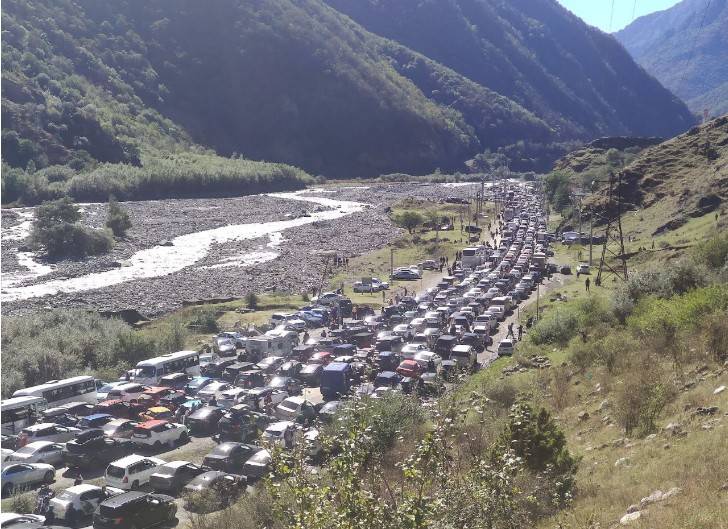
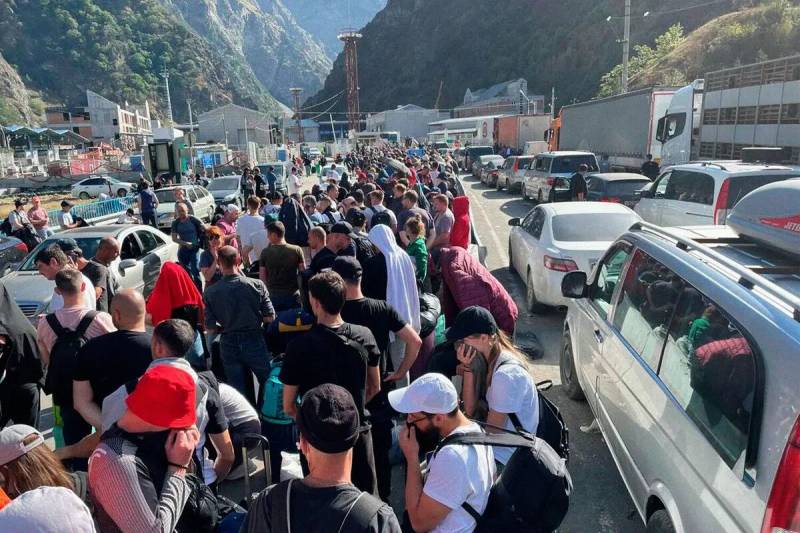
On September 26, 2022, the queue length here was 25 km.
Information